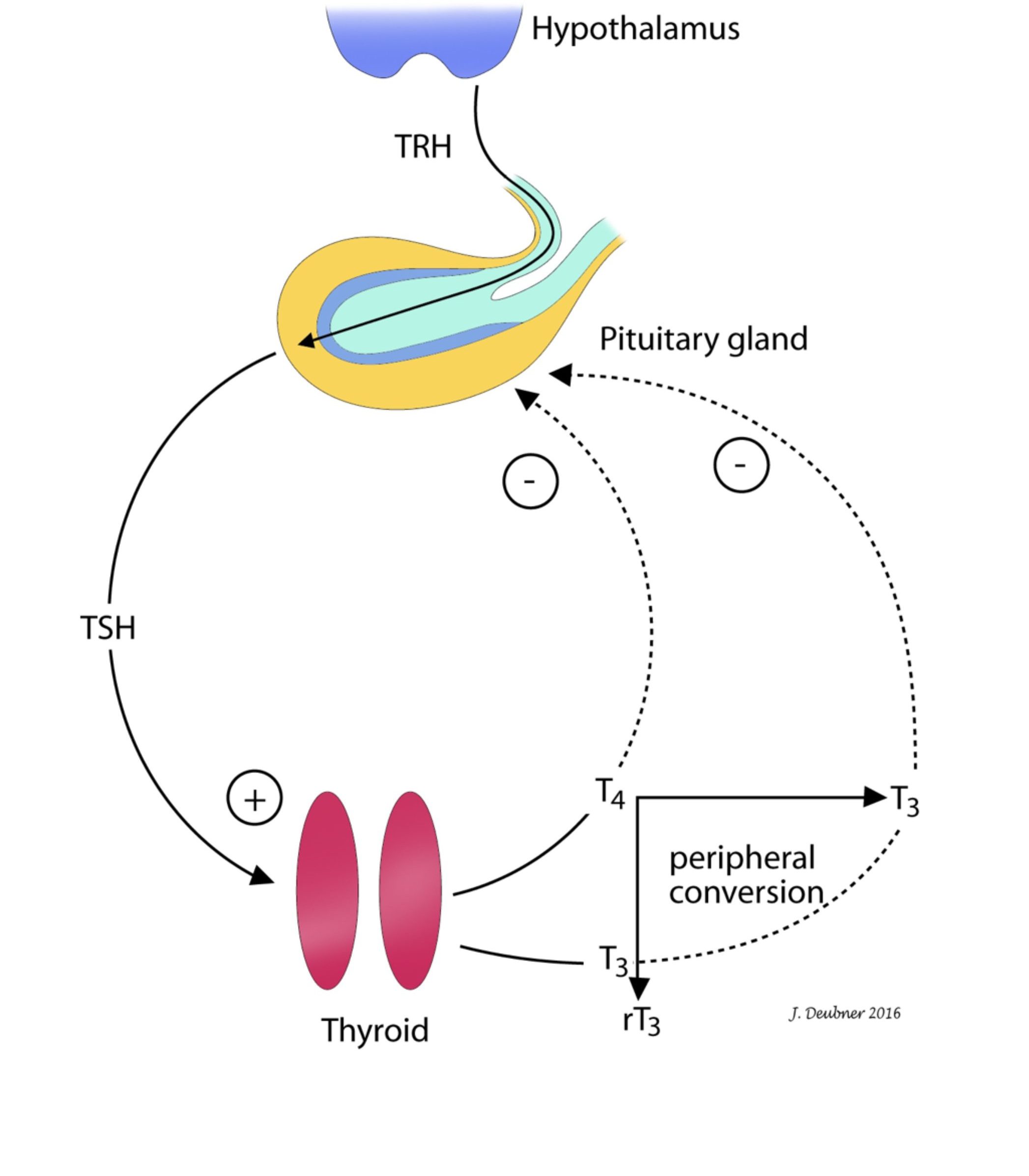Thyroid Gland
The thyroid gland plays a major role in regulating many body functions including metabolism, growth, and maturation. The thyroid gland produces and releases thyroxine (T4) and triiodothyronine (T3) in response to thyroid-stimulating hormone (TSH), also called thyrotropin, from the anterior pituitary gland (Fig. 10.1). Secretion of TSH is, in turn, regulated by thyrotropin-releasing hormone (TRH) from the hypothalamus. Thyroid gland epithelial cells secrete thyroglobulin into the lumen of follicles. Thyroglobulin is rich in tyrosine amino acids, the major substrates that combine with iodine to form T3 and T4. Although T4 is produced in much higher concentrations than T3, almost all of the T4 is eventually deiodinated to T3 or reverse T3 in peripheral tissues. T3 is the most active form of the hormone, while reverse T3 is an inactive form. Most T3 and T4 are bound to plasma proteins in the circulation and release to tissues occurs very slowly. Only free (not protein-bound) hormone can enter cells and carry out the role of increasing cellular activity/metabolism throughout the body. Therefore, free T4 concentration is a better assessment of thyroid function than total T4 concentration, however free T4 determination also has limitations as discussed below. Many laboratories measure total T4 and endogenous TSH concentrations. More specialized laboratories may also offer free T4 using equilibrium dialysis to separate bound from free T4, and thyroid hormone autoantibody determination. Measuring T3 and reverse T3 has not been shown to be clinically useful in the dog.

Factors affecting thyroid hormone concentrations
Nonthyroidal illnesses and several drugs, particularly glucocorticoids, lower total T4 and may also decrease free T4. Possible explanations for this effect include: decreased binding of thyroid hormones to protein (lowers total T4, but not free T4), inhibition of TSH release (lowers both total and free T4), and inhibition of T4 production (lowers both total and free T4). Sighthounds, notably Greyhound dogs, are reported to have lower RI for total serum T4 and free T4 than other dog breeds. Additional studies using select breeds of dogs suggest diagnostic value in establishing breed-specific RI when evaluating thyroid function.

